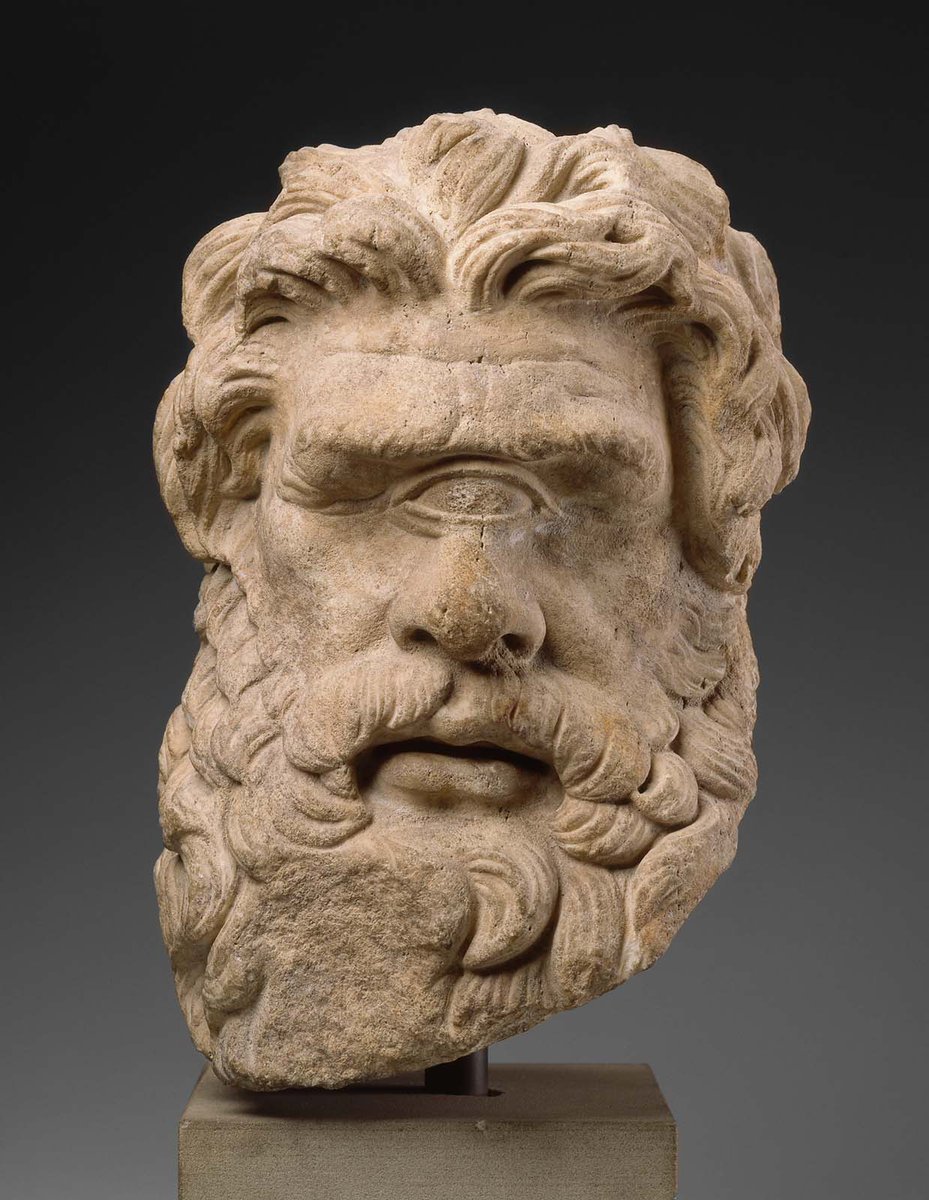حسام الدین شفیعیان
وبلاگ رسمی و شخصی حسام الدین شفیعیانحسام الدین شفیعیان
وبلاگ رسمی و شخصی حسام الدین شفیعیان/Cyclopes/
The Cyclopes (singular: Cyclops) were gigantic, one-eyed beings with enormous strength. Originally, there were three of them: Arges, Steropes, and Brontes; capable blacksmiths, these were the sons of Uranus and Gaea and the brothers of the Hecatoncheires and the Titans. They were imprisoned by Cronus but released by his son Zeus, for whom they forged his famous thunderbolt as a sign of gratitude. However, at a later time, poets spoke of a different type of Cyclopes, a race of dim-witted and violent one-eyed shepherds dwelling in the caves of the island of Sicily. The most famous among them was Polyphemus, the Cyclops who fell in love with Galatea and was eventually blinded by Odysseus.
The word “cyclops” can be literally translated as “round-eyed,” but many authors feel that it is derived from a much older word which originally meant “sheep thief.” Both etymologies describe the Cyclopes suspiciously well, and, in fact, it’s entirely possible that the very name of the Cyclopes may have influenced and, slowly but surely, distorted their original portrayal.
Even though they appear to have shared their most distinctive features between them, there seems to have been two very different types of Cyclopes in Ancient Greek mythology. Hesiod’s Cyclopes are three gigantic and divine blacksmiths, sons of Uranus and Gaea, residents of Olympus; Homer’s are a race of enormous and violent shepherds related to Poseidon and dwelling in the world of humans.
Hesiod mentions only three Cyclopes: Arges (Thunderer), Steropes (Lightner), and Brontes (Vivid). The sons of Uranus and Gaea, they are some of the earliest gods to ever spring into existence, born shortly after the Titans, and just before the Hecatoncheires – both of them their brothers.
Based on most descriptions, the divine Cyclopes were gigantic and immensely strong beings with a single eye in the middle of their foreheads. They had a knack for metalwork and handicraft and eventually ended up being the workmen of Hephaestus, whose workshop was supposed to be in the heart of the volcanic mountain Etna.
Incited by his mother Gaea, the youngest of the Titans, Cronus, castrated and overthrew his father Uranus, establishing himself as the supreme ruler of all gods. Fearing the might of his brothers, he imprisoned both the Cyclopes and the Hecatoncheires in Tartarus, setting the dragoness Campe to guard them for all eternity. Terrified of his children as well, Cronus tried devouring each of them as soon as they were born.
In time, however, the Cyclopes and the Hecatoncheires were released from Tartarus by the only one of Cronus’ children not to be eaten by him at birth: Zeus. Zeus did this at the advice of Gaea, who had informed him that he wouldn’t be able to depose Cronus without their help. True to Gaea’s words, the Cyclopes played a crucial part during the Titanomachy.
Upon landing on the island of the Cyclopes, Odysseus and his sailors found themselves entrapped in the cave of Polyphemus. The Cyclops ate six of Odysseus’ men, and Odysseus had no option but to devise a quick escape plan. So, one night, he intoxicated Polyphemus and pierced his eye with a wooden stake; the next morning, he told his men to hide under the bellies of Polyphemus’ sheep, and thus he managed to smuggle them out of the cave. It was because of this act that Poseidon, Polyphemus’ father, held a decade-long grudge against Odysseus, keeping him away from Ithaca and his beloved wife, Penelope.

برای نمایش آواتار خود در این وبلاگ در سایت Gravatar.com ثبت نام کنید. (راهنما)






















































ایمیل شما بعد از ثبت نمایش داده نخواهد شد